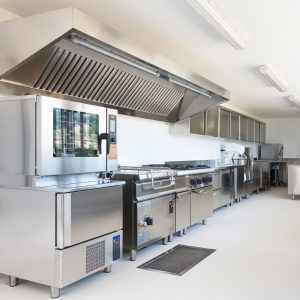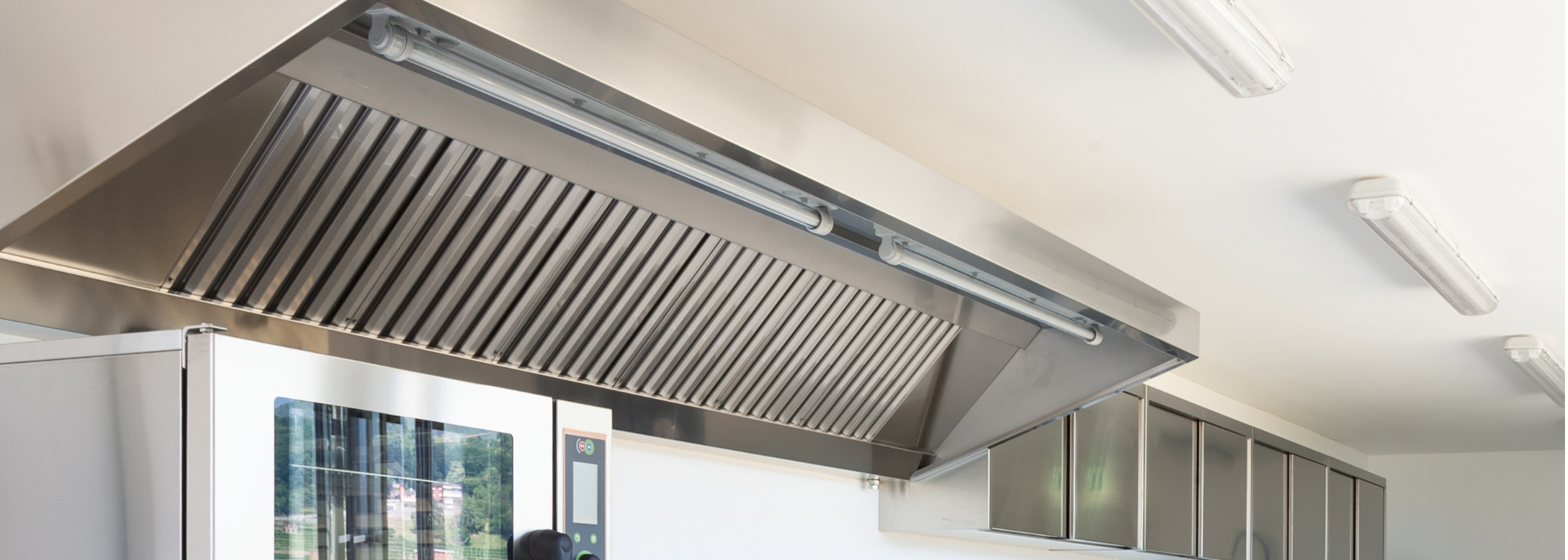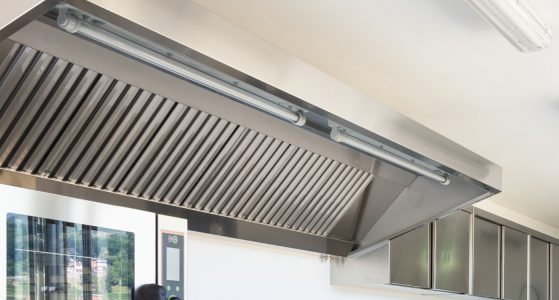 UV Kitchen Exhaust: Benefits Beyond Disinfection
UV Kitchen Exhaust: Benefits Beyond Disinfection
UV light technology provides sterilization solutions to various air, surface, and water treatment applications with high-intensity UV lamps proven to break down organic compounds. UVC germicidal lamps are used in many environments where eliminating harmful microorganisms is critical, such as hospitals, schools, and many public areas, including restaurants.
UV lamps help eliminate germs in the air and on surfaces, providing proven sterilization solutions for restaurants in dining areas and in the kitchen with food irradiation and UV kitchen exhaust systems.
UV Kitchen Exhaust: Self-Cleaning Technology
UV lamps in kitchen exhaust systems provide many benefits by preventing bacteria and grease buildup in kitchen exhaust hoods. This self-cleaning technology offers a cleaner, healthier, safer commercial kitchen by eliminating odors and mitigating the risk of grease fires. UV lamps with emissions in the UVC wavelength have long been used in HVAC systems to eliminate bacteria and mold growth in ductwork; this UVC technology provides the same benefits and prevents grease buildup in Commercial Kitchen Ventilation (CKV) systems.
How UV Kitchen Exhaust Systems Work
Kitchen exhaust systems provide the primary function of extracting grease through mechanical filters and inertial means. Kitchen hood exhausts successfully remove grease particles; the smaller grease particulates and remaining vapor are then exposed to the UVC light to break down the molecules, preventing grease buildup.
Photolysis and Ozonolysis
UVC lamps in UV kitchen exhaust systems break down grease particles in commercial kitchen exhaust systems through two distinct processes: photolysis and ozonolysis. Photolysis is the chemical reaction that occurs when photons break down a chemical compound. Photolysis breaks down the molecular bond and grease particles, and ozonolysis oxidizes the grease molecules.
Installing UV Lamps in Kitchen Exhaust Systems
UVC germicidal lamps can be installed in the interior of the hood exhaust plenum, in stainless steel fixtures against the top or back of the ductwork. UV lamps should be installed in kitchen exhaust systems with a separation of at least 10 cm to provide ample spacing for effective photolysis to occur.
Breakdown of Grease Buildup
The UV radiation reacts with the air pulled through the kitchen hood exhaust during the photolysis process, also called photodissociation, where the photons break down the oxygen molecules into oxygen atoms. The oxygen atoms combine with any remaining oxygen molecules to form ozone molecules, which react with the organic compounds in the grease.
This chemical reaction, called ozonolysis, alters the organic compounds in the grease found in the exhaust air to form byproducts that are easier to clean, specifically carbon dioxide and water vapor. Ozonolysis is proven to significantly reduce the buildup of grease deposits in both the grease exhaust duct and the hood exhaust system.
Benefits of UV Lamps in Kitchen Hood Exhaust Systems
Reducing grease buildup reduces the maintenance and cleaning required in a kitchen hood exhaust and decreases the likelihood of grease fires in the kitchen exhaust system. Ozone is known to eliminate foul odors in the air; thus, ozonolysis helps to eliminate the odor that comes with built-up grease, which can occur quickly in busy commercial kitchens.
UV sterilization lamps in kitchen exhaust systems help restaurant owners achieve many benefits, including:
- Significantly reduce built-up grease in kitchen exhausts
- Eliminate foul orders from stale, built-up grease
- Mitigate the risk of fires in kitchen exhaust systems
- Save money on cleaning and maintenance expenses
- Supports sustainable heat recovery
While UVC technology is safe and chemical-free, direct exposure to skin and eyes should be avoided. Safety measures that turn off the UV lights when the kitchen exhaust is turned off protect kitchen personnel.
It is important to use reputable UVC germicidal lamps and hood exhaust systems to ensure the proper breakdown of molecules and the safety of kitchen and restaurant workers. UVC systems should be installed in kitchen hood exhausts with several interlocks, ensuring that the UV lights will turn off when the exhaust system is off or when a filter is removed to protect against human exposure.
UVC Lamps for Restaurants and UV Kitchen Exhaust Systems
LightSources is recognized worldwide as a leading manufacturer of high-tech UVC germicidal lamps. We support large and small OEMs, with a wide selection of UVC germicidal lamps in various shapes and sizes and custom-engineered solutions to meet your specifications.
Our lighting engineers possess deep technical knowledge of UV radiation and continually develop first-to-market, proprietary technology through extensive research and development. We offer UV lamp prototype solutions and custom phosphor blends to produce the optimum wavelength for specific germicidal needs.
LAMP PRODUCT DATA:
UV Germicidal LampsLAMP Applications:
UV Germicidal ApplicationsLightSources designs, engineers and manufacturers high-tech, high performance UV lamps to meet your specific demands. Our UVC lamps engineered with proprietary technologies are proven to outlast and outperform comparable lamps. Contact us to speak with an engineer and learn how to improve health and safety in restaurants and commercial kitchens with UVC lamps designed for UV kitchen exhaust systems.




